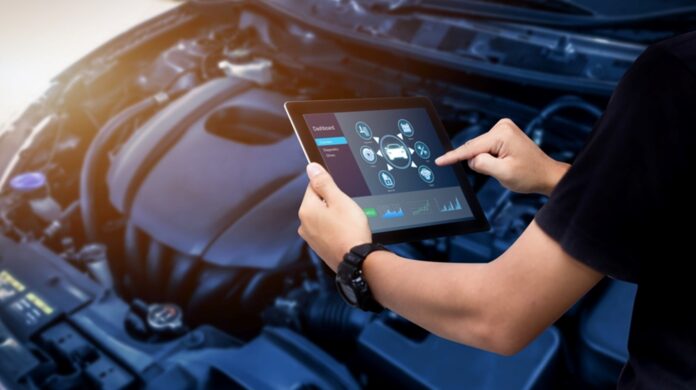Daily inspections are the best thing you can do for your car. Conditions under the hood can change on a dime when you drive for a living or commute long distances. Subtle changes in vehicle performance or appearance often mean the worst is yet to come. Delaying maintenance costs the average driver $1,193 per vehicle as problems spread to other systems.
Taking a few moments out of your day to check on key performance indicators will extend the life of your vehicle, reduce repair costs and improve fuel efficiency. The more you maintain your ride, the less you have to spend. Use this inspection checklist to fix issues as soon as they appear.
Check Part Service Intervals
Each of your vehicle’s roughly 30,000 parts has an expiration date, and most need to be replaced at least once during the car’s lifespan. Note how many miles you’ve driven or months have passed since your oil, exhaust and fuel systems were serviced to see if you need to change them based on the average working life. Buy diesel parts online as this deadline approaches to keep everything you need in stock.
Check Oil Levels and Quality
If the oil is low, top it off and use a dipstick to check the color and consistency. It should appear amber and smooth. Change the oil if it is cloudy or black from soot, and replace the oil filter to improve lubrication.
If you recently changed the oil and it still looks dirty, flush the system and replace the high-pressure oil pump (HPOP) to keep the fresh oil clean. Service the oil cooler if levels drop regularly to avoid burning off your supply. Cold weather makes oil less viscous, reducing lubrication. When starting at low temperatures, give the engine a few moments to circulate the oil.
Check Fuel Quality
Unused fuel in the tank or barrel left out in the cold will separate into water, increasing the risk of oxidation. Use another dipstick to ensure the fuel you’re about to burn won’t damage the engine.
Check Fuel Filter
Fuel collects debris, including metal shavings from rusted parts and fluids from leaks. Remove the fuel filter and clean off the mesh insert to remove particles.
Check Fuel Pressure
Monitor fuel pressure to ensure the fuel burns as a fine mist at optimal efficiency. Use your owner’s manual to check the recommended PSI. If pressure is low, clean or replace the fuel injectors and replace the diesel pump to maintain compression.
Check Coolant Levels
Add coolant if levels are low. Excess towing, high temperatures and mechanical leaks will overheat the engine, depleting the coolant faster than usual. Leaks from the exhaust gas recirculation (EGR) cooler can seep into the fuel supply, sending blue smoke out the tailpipe. A dirty radiator prevents heat from escaping. Clean the radiator and check the coolant system for leaks.
Check Air Filter
The air intake system is your vehicle’s lungs, balancing the ideal fuel-air ratio to generate power. Dirt and particulate matter will gradually clog the air filter, preventing airflow and reducing efficiency. Change the filter as it darkens with whatever’s flying through the air.
Check the Turbocharger
Airborne debris can also clog the turbocharger, delaying the boost. Inspect the turbine and pressure relief valve for damage and obstructions to accelerate with ease.
Check Diesel Exhaust Fluid
Diesel engines use diesel exhaust fluid (DEF) during combustion to turn NOx, a danger to human health, into nitrogen and oxygen during selective catalytic reduction (SCR). The engine won’t start without it. Fill the DEF tank.
Check Tire Pressure
Fill the tires to the recommended PSI based on the terrain and check for punctures and objects stuck between the treads. Temperature changes affect pressure, dropping in hot weather as the air compacts. Rotate the tires if weak spots form on one side.
Check Electrical Components
Test the battery’s power and all electrical components to ensure they function properly. Check the illumination of the head and tail lights, turn signals, phone charger and interior lights to see and communicate clearly.
Check the Exhaust Filter
The exhaust filter removes hazardous particles from being released into the atmosphere. Diesel vehicles regenerate the filter by increasing the exhaust temperature to burn off the soot and dirt, but it has limits. Replace the exhaust filter and check your pipe for residue and dents that reduce the flow.
Check Brake Pads
Braking gradually shaves off the pads, reducing the width. Replace the pads once they have less than a quarter of their original width.
Staying Ahead of Repairs
These components clue you into how your vehicle is performing under the hood. A long day of driving or a faulty part can dramatically change the car’s condition over a short period. Daily checks help you stop negative performance trends from affecting your bottom line. Give your ride the once-over it deserves before every shift.

